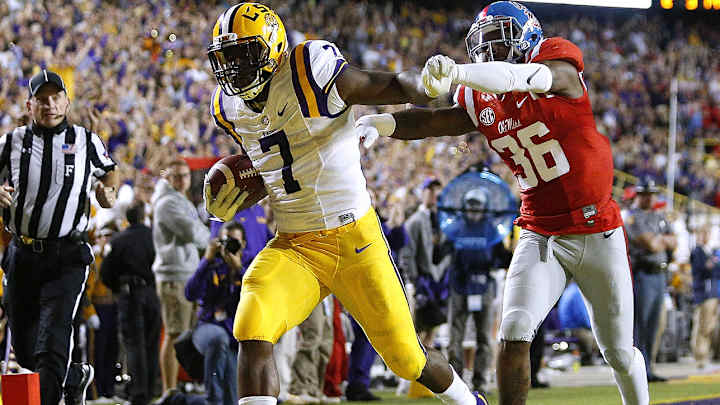2017 NFL draft prospect countdown, No. 10: Leonard Fournette, RB, LSU

What you need to know: Were it not for the rule requiring prospects to be three years removed from high school before entering the draft, Fournette might have pushed Ezekiel Elliott to be the first running back off the board in 2016. Fournette was a consensus All-America as a sophomore and finished sixth in the Heisman voting, thanks to 1,953 yards rushing and 23 total touchdowns. Last season, he was limited by an ankle injury to just seven games yet still averaged 120 yards rushing per contest.
He totaled 3,830 yards rushing, 526 yards receiving and 42 touchdowns for his LSU career. One of those TDs came as a kick returner during his freshman year. Despite bypassing his final year of eligibility to turn pro, Fournette ranks top 20 in SEC history for career rushing yards and touchdowns. His younger brother, Lanard, is also a running back at LSU.
Strengths: Fournette averaged 128.9 yards during three September games last season, and he had a dazzling 284-yard, three-TD showing against Ole Miss. To get the real Fournette experience, though, you have to rewind back to 2015, because the ankle injury he suffered during preseason practice in ’16 kept him from ever fully hitting his stride. But as a healthy sophomore, Fournette was about as good as college running backs get.
He has a reputation as a power back because he carries the fight to defenders with his 6-foot, 240-pound frame (he slimmed down to 228 between the combine weigh-in and LSU’s Pro Day). He is far more than a power back. He has 4.5 speed to get to the edge, and he can pull away in the open field.
Fournette describes himself as a “north-and-south runner. Can make defenders miss, can run over them, can run past them.”
Of course, it is the brute strength that helps set him apart. Fournette can move the pile between the tackles, and he is a load to bring down once he gets moving. Defenders don’t have much luck taking him down one-on-one, especially in the secondary. Cornerbacks and passive safeties may as well not even try to make a play on him.
He maxed out at four receptions in a game, hitting that number on three separate occasions. Still, Fournette’s receiving skills are underrated, and they could help keep him on the field for all three downs.
Everything Else That Leonard Fournette Does
Weaknesses: Fournette’s “north-and-south” call is on the nose, because he is not a back that’s going to hurt a team going east and west. He can run outside the tackles and turn upfield, but he is not going to shake defenders with lateral movement. The cuts beyond the line of scrimmage just aren’t there—Fournette is going to get downhill with force, but he needs a lane to do so.
The nagging ankle injury from 2016, on its own, is not enough to lower Fournette’s stock. But running backs are thought to have short shelf lives as it is, and overly physical backs can do as much damage to themselves as to opponents. A team drafting Fournette in the top 20 will want to make sure it’s getting the ’15 version of the star back.
NFL player comparison: Ceiling? Adrian Peterson. Floor? Chris Ivory.

Chris Burke covers the NFL for Sports Illustrated and is SI.com’s lead NFL draft expert. He joined SI in 2011 and lives in Ann Arbor, Mich.